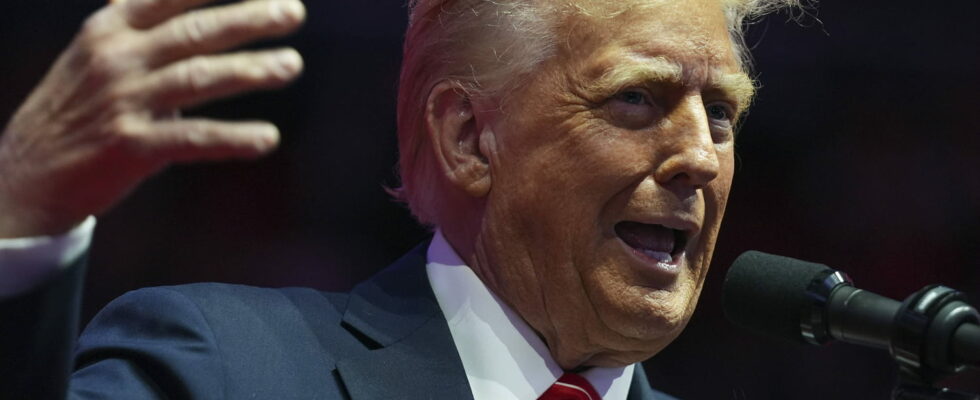Donald Trump becomes the President of the United States again this Monday, January 20 and, with a majority of Republican elected officials in Congress, he will have an easier time carrying out his policy. However, its power is not without limit and some safeguards remain.
He is now the 45th and 47th president of the United States. For his return to power, Donald Trump can boast of having an absolute majority in Congress (the equivalent of Parliament) and of having a Supreme Court that is predominantly conservative, therefore favorable to his camp. A dream scenario for the tenant of the White House, but which raises fears of very vertical power and total control of institutions by the head of state who has expressed his determination to carry out his policy. “I will act with unprecedented speed and force” to “resolve each of the crises facing our country,” Donald Trump declared Sunday evening, the day before his inauguration, during a meeting in Washington DC.
He plans to set the tone from his first day at the White House by signing around a hundred presidential decrees, “executive orders”, according to his team. These texts do not have the value of laws, but are directives addressed by the President of the United States to civil servants and government agencies to manage public action, which includes the army, but also other institutions managing the education or health. Among the measures that Donald Trump wants to implement: the launch of the “largest expulsion program in American history” against illegal migrants; customs taxes against Mexico, Canada or China; facilitating drilling and exploitation of fossil fuels; or the presidential pardon granted to attackers of the Capitol in 2021.
A majority that remains fragile in Congress
Signing so many decrees is “a way of showing that the Trump administration is at work and that it will be effective,” explains political scientist specializing in the United States, Nicole Bacharan, at Parisian. But for Alexis Pichard, associate researcher at the Center for Anglophone Research at Paris Nanterre University interviewed by BFMTVthis hyperactivity of Donald Trump on his first day is proof that the president-elect will encounter some legislative difficulties despite his majority in Congress.
“He won’t be able to do that much from a legislative point of view. In the House of Representatives, he only has a five-vote lead,” recalls the specialist. The Republican camp has 220 elected officials against 215 for the Democrats, when the majority is set at 218 votes. A lead which can therefore be overturned with just a few votes. As for the Senate, the Republican can rely on 53 elected officials among the 100 senators. “He does not have the supermajority of 60 votes necessary to have certain texts adopted,” adds Alexis Pichard. Especially since the leader of the Republicans in the Senate is not a Trumpist and could dissociate himself from certain measures. If Donald Trump has a clear advantage in Congress, there seem to be some safeguards left. Note that this majority could be confirmed or overturned during the mid-term elections scheduled for 2026.
The limits of the Constitution
More than the composition of Congress, predominantly red and therefore favorable to the elected president, it is the legislative texts which could serve as safeguards, in particular for the numerous presidential decrees announced. Executive orders can cover any subject, but are required to respect pre-existing laws. They must also respect the Constitution. “Since the president is responsible for enforcing the laws, he cannot take measures that go against them,” recalls Nicole Bacharan. This Constitution already stands as an obstacle to a project of Donald Trump: the suppression of land rights, which is protected by the 14th Amendment.
What if Donald Trump considered amending the Constitution? This is a possibility, but this maneuver would be difficult to carry out, despite a legislative majority. Article 5 of the basic text specifies the conditions for its modification: either two-thirds of Congress or two-thirds of the States must propose one or more amendments which must then be ratified by the legislatures of three-quarters of the United States to replace or add to the supreme text. However, out of the 50 American states, 27 are led by Republican governors: a narrow majority far from ensuring the support of three-quarters of the states.
